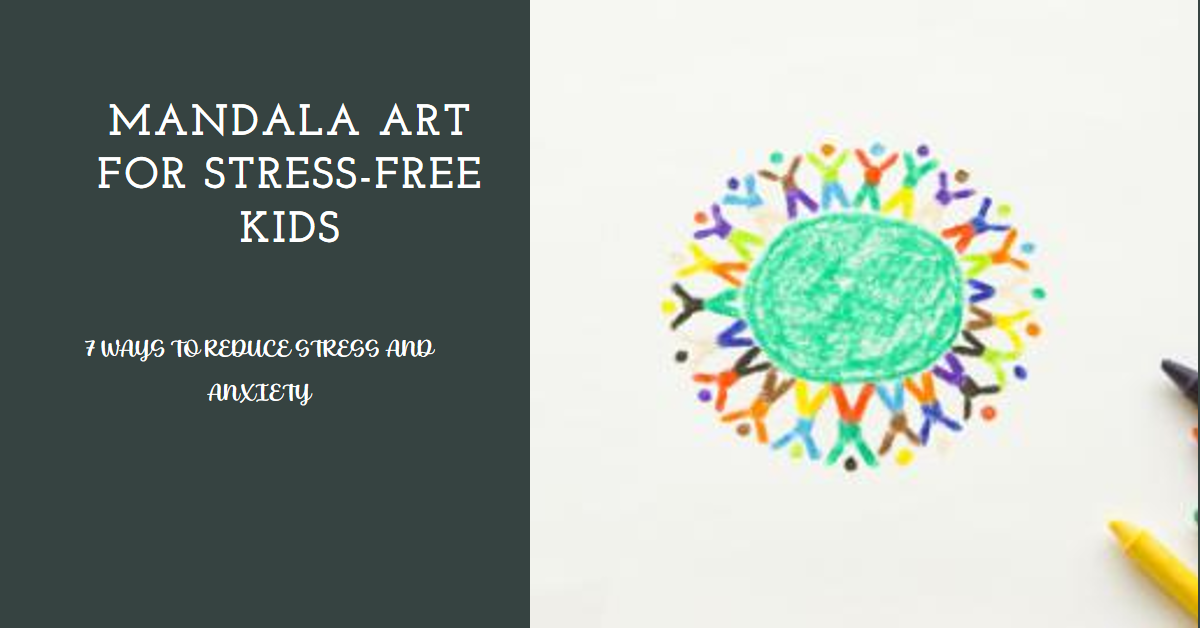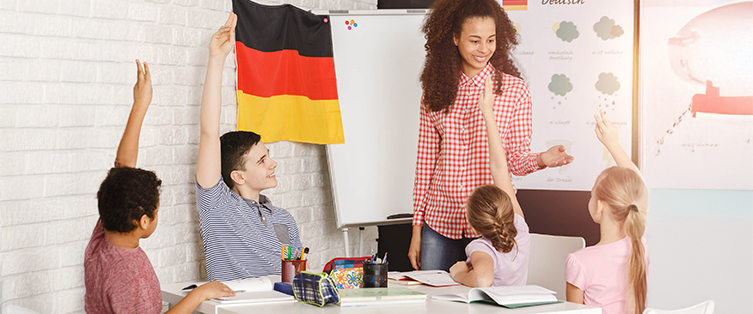Mandala art, an ancient form of artistic expression, has recently gained popularity as a therapeutic tool, especially for children. This art form, characterized by its intricate circular designs, is more than just a creative endeavour; it’s a journey into the world of mindfulness and relaxation. This article explains how creating mandala art can help children reduce stress and anxiety. It will cover why and how it works. The text is simple and direct, with short sentences and everyday language. The goal is to make the information easy to understand and accessible. At Pursueit, we recognize the power of this art form and offer specialized classes that cater to young minds. Our focus is not just on teaching the techniques of mandala drawing but also on harnessing its therapeutic benefits. As we explore the calming power of Mandala art, we’ll uncover how it can be a transformative experience for children, aiding in their emotional and mental well-being.
The Calming Power of Mandala Art
At Pursueit, we harness the calming power of Mandala art to help children find peace and tranquillity. Through intricate designs and mindful colouring, kids learn to channel their energy positively, reducing stress and enhancing focus, making Mandala art a powerful tool for emotional and mental well-being.
Understanding Mandala Art
Mandala art, originating from the Sanskrit word for “circle,” is significant in various cultures and spiritual practices. At Pursueit, we introduce children to mandala art’s rich history and significance. Our classes are designed to teach the art form and connect children with its cultural roots. Mandalas are more than just drawings; they symbolise harmony, unity, and wholeness. By engaging in mandala drawing, children embark on a journey transcending mere artistic creation’s boundaries.
Why Mandala Art is Soothing
The process of creating a mandala is inherently meditative. At Pursueit, we emphasize the soothing effects of mandala art. As children focus on the repetitive patterns and symmetry, they enter a state of deep concentration and relaxation. This practice helps calm their minds, reduces stress, and channels their energy into something positive and creative. The act of colouring and designing mandalas allows children to express themselves non-verbally, providing a safe outlet for their emotions and thoughts. Through mandala art, we offer a peaceful escape, aiding in reducing anxiety and stress in young minds.
Mandala Art as a Creative Outlet
With its intricate patterns and symmetrical designs, Mandala art is more than just a visual delight; it’s a gateway to creativity, especially for kids. At Pursueit, we believe in nurturing this creative spark through mandala art. Our courses are designed to let children explore their artistic side in a structured yet imaginative environment.
Encouraging Creativity with Mandalas
Mandalas are not just art; they’re a journey into the world of creativity. At Pursueit, we introduce kids to the basics of mandala drawing, allowing them to express themselves through colours and shapes. This art form is particularly effective in enhancing cognitive abilities, improving focus, and fostering a sense of accomplishment.
Key Points:
- Enhances cognitive skills.
- Improves focus and concentration.
- Fosters a sense of accomplishment.
Examples of Creative Mandala Art
Our creative mandala art classes showcase a variety of projects, from simple geometric patterns to more elaborate designs. These projects are tailored to stimulate the imagination and encourage artistic expression in a fun and engaging way.
Key Projects:
- Geometric pattern mandalas for beginners.
- Themed mandalas for advanced learners.
- Collaborative mandala projects for group activities.
Easy Mandala Art for Beginners
Starting with easy mandala art can be a fulfilling experience for beginners. At Pursueit, we guide our students through the process, ensuring that each step is educational and enjoyable.
Recommended: A Complete Guide for Beginners: on how to make Customized Handmade jewellery
Starting with Simple Designs
Beginners should start with simple shapes and patterns in our mandala art for beginners course. Our course introduces more complex elements as the student becomes more comfortable. This approach ensures a solid foundation and a gradual progression in skill.
Key Approaches:
- Start with basic shapes and patterns.
- Gradual introduction of complexity.
- Personalized guidance for each student.
Progressing in Complexity
As students gain confidence, we introduce more complex designs in our mandala art classes. This progression is designed to challenge and inspire, encouraging students to explore their creative boundaries.
Key Progressions:
- Introduction of intricate patterns and designs.
- Techniques for adding depth and texture.
- Encouragement to develop a personal style.
Incorporating Mandalas in Daily Life
With its intricate patterns and soothing symmetry, Mandala art is more than just an artistic endeavour; it’s a journey into mindfulness and relaxation. At Pursueit, we believe in integrating Mandala drawing into daily routines, making it an accessible and enriching practice for everyone, especially beginners.
Daily Mandala Drawing Routines
Incorporating mandala art into daily life can be a transformative experience. It’s not just about creating art; it’s about creating peace in your day. At Pursueit, we encourage starting with easy mandala art, allowing even beginners to enjoy the process without feeling overwhelmed.
- Morning Rituals: Start your day with a simple mandala drawing, setting a calm tone for the day ahead.
- Evening Wind-Down: End your day by reflecting and unwinding with a mandala drawing session.
Mandalas as a Mindfulness Practice
Mandala art is a powerful tool for mindfulness. The act of drawing concentric patterns requires focus, which helps in calming the mind and reducing stress. Pursueit’s classes are designed to guide you through this meditative process.
- Stress Reduction: Focusing on mandala patterns can help alleviate daily stress.
- Enhanced Concentration: Regular practice improves focus and attention to detail.
Finding the Right Mandala Art Class
Choosing the right art class is crucial for a fulfilling mandala art experience. Pursueit offers art classes near you that suit all skill levels and interests. The classes are easy to find, and you can choose the one that fits you best.
Choosing the Right Art Class
Finding the right class can be a game-changer, especially for those new to mandala art. Pursueit’s classes are designed to cater to all levels, ensuring a supportive and enriching environment.
- Location and Convenience: Pursueit offers classes in various locations, making it easy to find one near you.
- Tailored to Skill Level: Whether you’re a beginner or more advanced, there’s a class for you.
See more: DIY Craft Kits for Kids: Unleashing Creativity at Home
Benefits of Professional Guidance
Attending professional mandala art classes offers numerous advantages. Expert guidance can accelerate learning and enhance the overall experience.
- Structured Learning: Classes provide a structured approach to learning mandala art.
- Personalized Feedback: Instructors offer individualized feedback to help you improve.
Conclusion
Mandala art offers a unique blend of creative expression and therapeutic benefits, making it an ideal activity for kids to reduce stress and anxiety. Through the intricate designs and mindful process of creating mandalas, children can find a peaceful escape and a way to express themselves artistically. Pursueit recognizes the importance of this art form and offers specialized classes that cater to the needs of young minds, fostering a nurturing environment for growth and relaxation.
Embark on a journey of creativity and tranquility with Pursueit’s mandala art classes. Let your kids discover the joy and calmness of mandala drawing. Explore our classes today!
FAQs
Q.1 What is mandala art, and what cultural or spiritual significance does it hold?
Mandala art, known for its concentric designs, holds significant cultural and spiritual value in various traditions, symbolizing harmony and unity.
Q.2 Can you explain the basic elements commonly found in mandala designs?
Common elements include geometric patterns, circles, and symmetrical designs, each representing different aspects of the universe and self.
Q.3 How has mandala art evolved in different cultures and artistic traditions?
Mandala art has adapted to various cultural contexts, incorporating unique symbols and styles and reflecting diverse artistic traditions.
Q.4 How can creating mandala art be a therapeutic or meditative practice?
Creating mandalas promotes focus and mindfulness, offering a therapeutic escape from stress and fostering inner peace.
Q.5 Are there specific tips for using mandala art for stress relief and relaxation?
Focus on the process rather than the outcome, choose soothing colours, and create a calm environment to maximize the stress-relieving benefits of mandala art.







Leave a Reply